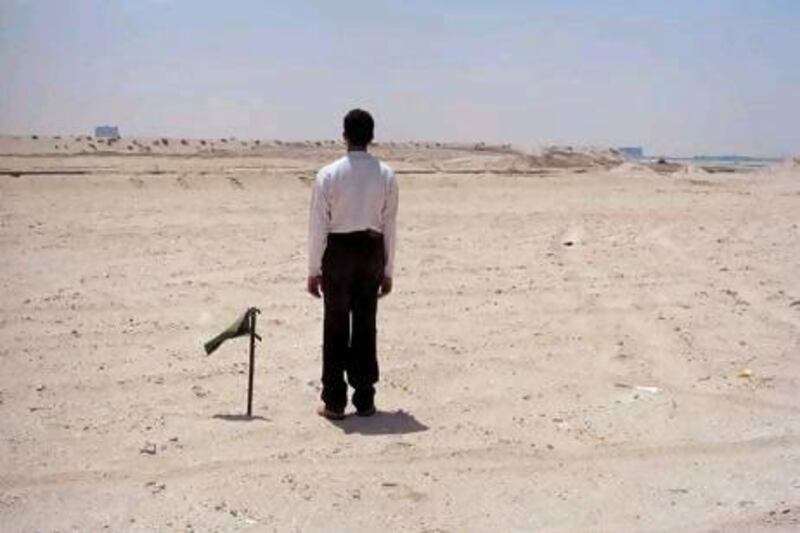Mohammed Kazem, who was part of the "second generation" of Emirati contemporary artists and a protégé of Hassan Sharif, has been tasked with representing the UAE at the 55th edition of the Venice Biennale next June.
This won't be the first time the 43-year-old artist has participated in the Venice Biennale, having exhibited with the Abu Dhabi Authority for Culture and Heritage's (Adach) platform in 2009.
"I want to show that contemporary art has been established in the UAE since the end of the 1970s," says Kazem. "There was a gap between the audience and the society between contemporary art at that time. But Hassan Sharif was teaching for 10 years in order to create a new generation of artists, which I'm part of."
Together with Sharif, Kazem has been a pioneer of more experimental forms in art in the UAE, in addition to maintaining his practice as a painter. Kazem has also helped curate shows in Dubai and Sharjah that featured young Emirati talent.
Reem Fadda, the curator of the forthcoming UAE pavilion, says that returning to an older generation of Emirati artist was important for next year's event. "There was very interesting critical thinking and a futuristic approach in the other two UAE pavilions, but we want to go back in history," she says. "It offers grounding but also an individualist narrative to focus on one artist as a way to talk about the urbanity and modernity of the country."
Fadda is the associate curator of Middle Eastern art for the Solomon R Guggenheim Foundation in New York. She has previously worked on an exhibition of Palestinian artists at the Venice Biennale in 2009. "There's very much a need to historicise the art movement in the UAE, which has roots over 40 years ago, and ground the art historical discourse," she says. "What better place than the national pavilion to provide that nuanced history?"
Kazem's work has often dealt with this modernity directly, and Fadda refers to his 1997 work Photos withFlags to illustrate.
"You see Mohammed Kazem with his back to us, standing near a coloured flag in an empty space in Dubai. As we know, a lot of these empty spaces later became highly developed with buildings... We understand that work as a critical reminder that the intellectual and the artist was present to interrogate where we will go forward in time and be a witness to that kind of development."
The Venice Biennale is an exhibition that allows countries to present national pavilions dedicated to artists often from that country. Next year's participation will mark the third time the UAE has been represented and the first time it has presented a solo show in its pavilion.
The pavilion is supported by the Ministry of Culture, Youth and Community Development and, for the first time this year, the Sheikha Salama bint Hamdan Al Nahyan Foundation.





